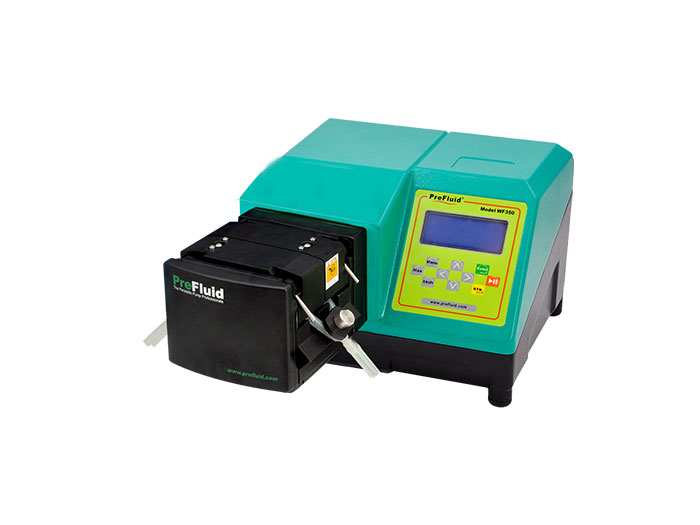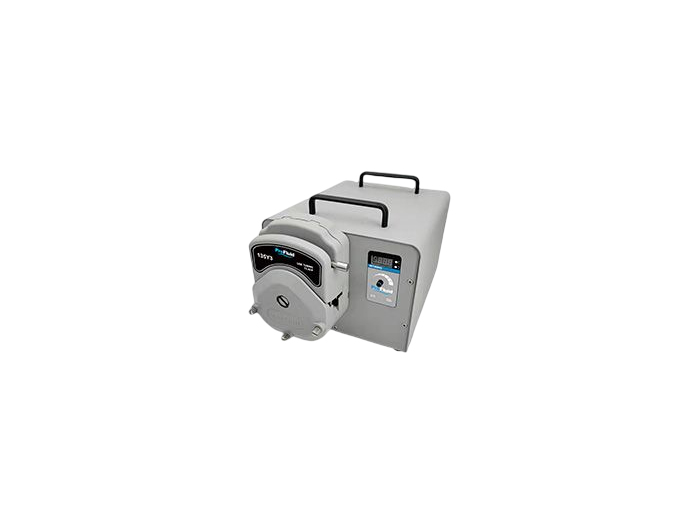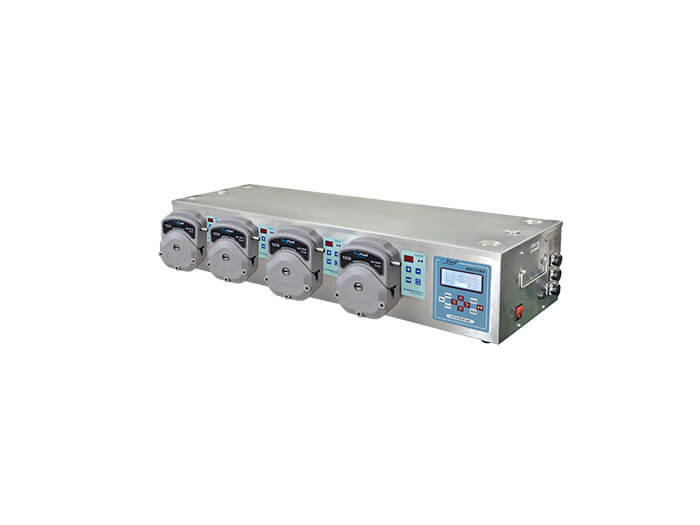A peristaltic pump is like squeezing a fluid filled hose with a finger clamp. The fluid moves forward as the finger slides forward. A peristaltic pump works the same way except instead of a finger it has a roller. Fluid is pumped by alternately squeezing and releasing the pump's elastic delivery hose. It is like squeezing a hose between two fingers. With the movement of the fingers, a negative pressure is formed in the pipe and the liquid flows with it.
Peristaltic pump is a section of pump tube between two roller to form a "pillow" shape of fluid. The volume of the "pillow" depends on the inner diameter of the pump pipe and the geometry of the rotor. The flow rate depends on the product of three parameters: the speed of the pump head and the size of the "pillows" and the number of "pillows" produced by each turn of the rotor. The size of the "pillow" is generally constant (except when pumping particularly viscous fluids).
Compared with the pump with the same rotor diameter, the pump with the larger "pillow" volume has a larger fluid volume transported by the rotor per revolution, but the pulsation degree is also larger. This is similar to the case of membrane valves. The pump with a smaller "pillow" volume has a smaller volume of fluid transported by the rotor per turn. Moreover, the rapid and continuous formation of the small "pillow" makes the flow of fluid more stable. This is similar to the way gear pumps work.
Advantages of peristaltic pump
(1) No pollution - liquid only contact pump pipe
(2) High transmission accuracy
(3) Easy to clean - only need to replace the pump tube can work again
(4) Low shear force -- suitable for liquid, gas, two-phase flow and high viscosity fluid, especially suitable for transporting biological fluids sensitive to shear force.
(5) Low maintenance - no sealing parts, no valves
(6) OEM products can be provided - according to user requirements, design and manufacture of peristaltic pump products supporting its equipment


